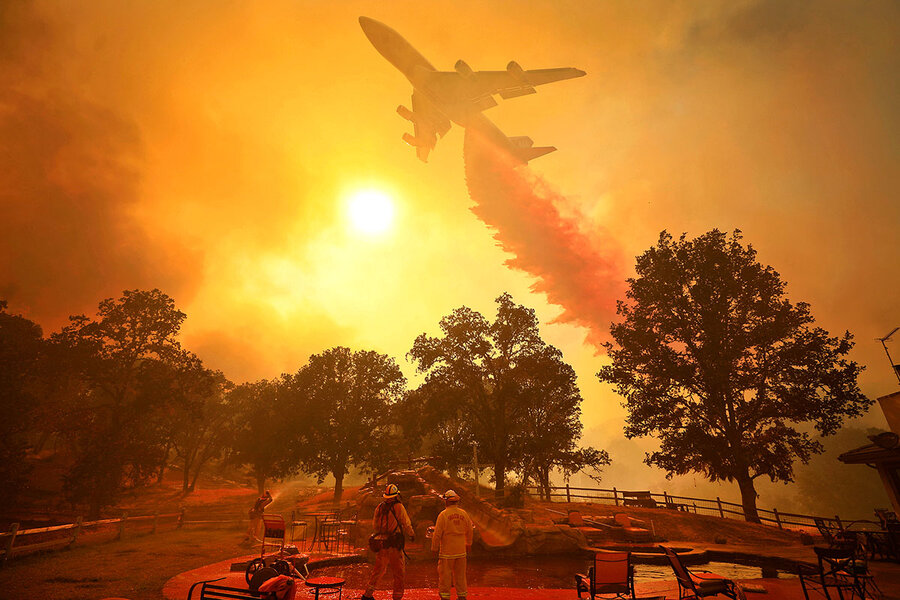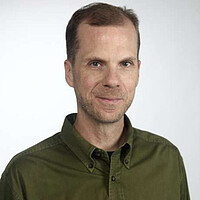Wildfires force California to reckon with a not-so-new normal
Loading...
| Sacramento, Calif.
Wildfires in California scorched some 292,000 acres and forced 52,000 residents from their homes in the first seven months of 2018. Researchers say the ferocity of California’s recent blazes provides a chance for state legislators to prod cities and counties toward an approach to land-use planning that restricts housing growth in fire-prone areas. “Maybe it’s time to take what has been a given — development with more growth as the driving model — and rethink that model,” says Char Miller, a wildfire expert at Pomona College in Claremont, Calif. The legislature has formed a bipartisan committee to craft proposals intended to strengthen the state’s wildfire-prevention policies, but land-use planning remains absent from its agenda. State Democratic Sen. Bill Dodd, the panel’s co-chairman, recognizes the spiraling costs of battling wildfires, but he believes a legislative attempt to guide local land use in fire-prone areas would provoke unbending resistance. Yet Max Moritz, a wildfire specialist at the University of California, Santa Barbara, thinks that a case can be made “because we all end up paying for the destruction. We also publicly fund all the fire suppression, the fire agencies, the disaster support systems. So there’s a place for saying that we need a more science-based approach to land management.”
Why We Wrote This
With 18 wildfires burning across the state and a “new normal” that's several years old, wildfire experts say it may be time for California to take what has been a given – development with more growth – and rethink that model.
The wildfire destruction over a wide swath of California moved Gov. Jerry Brown to offer a sobering prognosis for the state’s future. “This is the new normal,” he said, “and this could be something that happens every year or every few years.”
He made his comments in December after surveying the damage wrought by fires in Southern California that caused more than $3 billion in losses. Nine months later, the Democratic governor echoed his own words as 18 wildfires burned across the state, most of them in its northern half. At a press conference Wednesday, he forecast a rise in the number, intensity, and cost of fires, warning of “the new normal that we will have to face.”
His choice of phrase draws polite but firm rebuttals from wildfire experts, who commend the state’s sense of urgency in fighting fires while lamenting what they regard as a chronic flaw in its prevention efforts. They argue that for too long lawmakers have avoided prodding local officials, developers, and residents toward an approach to land use planning that restricts housing growth in fire-prone areas.
Why We Wrote This
With 18 wildfires burning across the state and a “new normal” that's several years old, wildfire experts say it may be time for California to take what has been a given – development with more growth – and rethink that model.
“This isn’t the new normal,” says Char Miller, a professor of environmental analysis and history at Pomona College in Claremont, Calif. “It’s become normal, and there needs to be recognition and acceptance on the part of politicians at every level and citizens that this has been going on for several years.”
The first seven months of 2018 reaffirmed the hot, harsh reality as fires scorched some 292,000 acres statewide and forced 52,000 residents from their homes. In Dr. Miller’s view, the widening devastation reinforces the need to create more natural buffers between communities and wilderness that provide adequate space for humankind and wildfires alike.
“If we take climate change seriously and assume that fires of this magnitude and greater are a constant, then the question that should get the attention of legislators is, ‘How are we going to manage our presence in the fire zone?’ ” he says. “Maybe it’s time to take what has been a given — development with more growth as the driving model — and rethink that model.”
The California legislature formed a special conference committee this summer to craft proposals intended to strengthen the state’s wildfire prevention policies. Lawmakers established the bipartisan panel after fires last year killed 46 people, burned 1.2 million acres, and resulted in almost $12 billion in damages.
The committee’s focus on improving utility grid safety and examining the liability of power companies reflects the causes of several blazes in 2017. The absence of land use planning from its agenda suggests what Max Moritz, a wildfire specialist at the University of California, Santa Barbara, describes as a “political will problem.”
“If you want to keep communities safe, then you have to think about living differently, about where and how we build our communities,” he says. “But there’s no bill in the legislature about that.”
A familiar obstacle
The largest of the blazes ravaging California has claimed six lives, more than 1,500 structures, and almost 132,000 acres since July 23. The Carr Fire has besieged the city of Redding, 160 miles north of Sacramento, and remained only 39 percent contained early Friday.
State Sen. Bill Dodd, (D) of Napa, co-chairman of the special legislative committee, understands the dread of residents in the line of wildfire. Last fall, one of two fires that ripped through Napa County stopped about a block from his house, barely sparing him the fate of 150 neighbors who lost their homes.
Mr. Dodd supports the work of state agencies, including the California Department of Forestry and Fire Protection, or Cal Fire, that offer counties guidance on assessing fire danger when planning developments. He further recognizes the spiraling costs of battling wildfires and the deepening risks to firefighters as they confront blazes of greater size and stamina. The state has spent $130 million battling this year’s wildfires to date, more than a quarter of its annual fire budget, and pressed nearly 13,000 firefighters into service, with volunteers arriving from other states and countries.
Despite the depth and urgency of the crisis, Dodd says that an attempt by lawmakers to propose a legislative prescription for managing local land use in and near fire zones would meet with unbending resistance.
“A one-size-fits-all solution for the entire state of California probably won’t work,” he says. At the same time, he adds, “People in more rural areas have to know and understand that life may be more difficult and it certainly will be more expensive if these fires continue the way they have been.”
The reluctance of state legislators to broach guidelines for curtailing development in fire zones represents a familiar obstacle to Bill Stewart, co-director of the Center for Fire Research and Outreach at the University of California, Berkeley. He has advised lawmakers on wildfire prevention and found that even modest ideas related to curbing growth in what is known as the “wildland urban interface” draw little interest. He doubts that will change as the legislature’s session resumes next week.
“When you’re in the middle of fire season, you’re thinking about fire suppression, which is important and which we’re good at,” he says. “But we continue to underinvest in prevention, and at some point, we have to do something different because the fire trends are scary.”
‘A little bit of a cop-out’
The wildland-urban interface refers to areas where housing meets or mingles with wildland vegetation and that have the greatest potential for fires. A study this year found that the number of homes in such settings grew by 12.6 million nationwide from 1990 to 2010.
The ferocity of California’s blazes the past 18 months provides a chance for legislators to persuade cities and counties to reconsider land use planning, Dr. Moritz contends.
“Saying that all building code and building permit decisions are local — that’s a little bit of a cop-out because we all end up paying for the destruction,” says Moritz, who has written about communities learning to coexist with wildfire. “We also publicly fund all the fire suppression, the fire agencies, the disaster support systems. So there’s a place for saying that we need a more science-based approach to land management that could reduce the amount of damage.’ ”
In the wake of wildfires, most homeowners want to rebuild in the same place. Miller, the Pomona professor, suggests that local officials offer to purchase properties from owners willing to sell and buy undeveloped land that borders communities near fire zones, raising the funds through bonds. The small city of Monrovia, tucked into the foothills of the San Gabriel Mountains, took that approach 20 years ago to limit its exposure to wildfires.
“We need to change our thinking about building and what we assume is normal, which is building houses anywhere and everywhere,” he says. “We need to accept the reality we’re living in.”
The severity and early arrival of the fire season has exacted a stark human and financial toll, and the worst summer heat still lies ahead. But as gray smoke smears California’s skies, researchers sense an opportunity for the state to make the case to local officials that the shared costs of better planning can yield shared benefits. Assemblyman Chris Holden, co-chairman of the special legislative commission, asserts that the broader discussion of possible solutions can’t wait much longer.
“We’ve been in this new normal for a while,” he says. “So on the larger planning level, we need to have the conversation that looks at all prevention ideas. It’s too important not to.”








